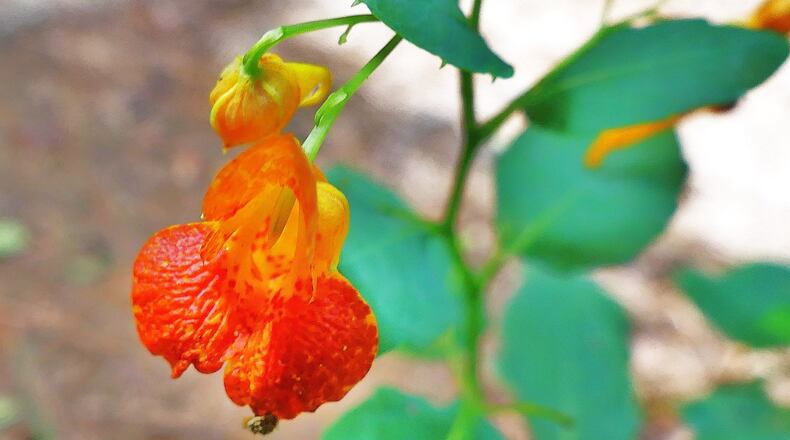It was a wildflower whirlwind last week as several of us plant lovers ventured far and wide across Georgia and even into the Florida panhandle to enjoy an amazing variety of late summer blooms.
So many wildflowers of all shapes and vivid colors are blooming or coming into bloom now that it’s well worth the effort to get out and see them.
Our wildflower ventures began with a hike in the Johnson Ferry north unit of the Chattahoochee River National Recreation Area. Led by longtime park ranger and naturalist Jerry Hightower, our trek took us across a long meadow and through shady woods along Mulberry Creek.
Among the meadow’s many sun-loving plants were the strikingly large, white flowers of wild hibiscus. In the cool woods along the creek, a species that caught our eye was the jewelweed, sporting its bright orange tubular flowers.
Jerry noted that jewelweed is an effective antidote for poison ivy rash. For relief, crush and rub the plant’s twigs and leaves on skin that’s been exposed to poison ivy.
A few days later, several of us Georgia Botanical Society members braved heat and biting bugs to explore the flora of the Apalachicola National Forest in the Florida panhandle. For several of us, it was a chance to see an array of subtropical wildflowers, including several species of wild orchids.
Perhaps the biggest surprise, though, came when we had to cross a small ditch in a boggy meadow. Growing in it was an abundance of carnivorous Venus flytrap plants, which originally were found only in a few coastal bogs in North Carolina. How they got to the Florida bog is open to speculation.
Next day, we were back in Georgia to explore a longleaf pine/wiregrass forest on Greenwood Plantation, an old quail hunting estate near Thomasville. As our leader Wilson Baker explained, the longleaf/wiregrass ecosystem is one of the world’s most diverse natural environments, nurturing hundreds of plant species in just one acre.
IN THE SKY: From David Dundee, Tellus Science Museum astronomer: The moon will be first quarter on Tuesday. Venus rises in the east two hours before dawn. Jupiter is low in the west just after sunset. Saturn is high in the east just at dusk and will appear near the moon on Wednesday night.
About the Author
Keep Reading
The Latest
Featured


